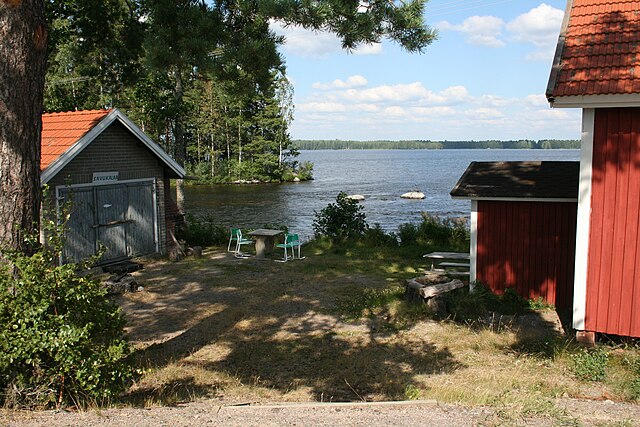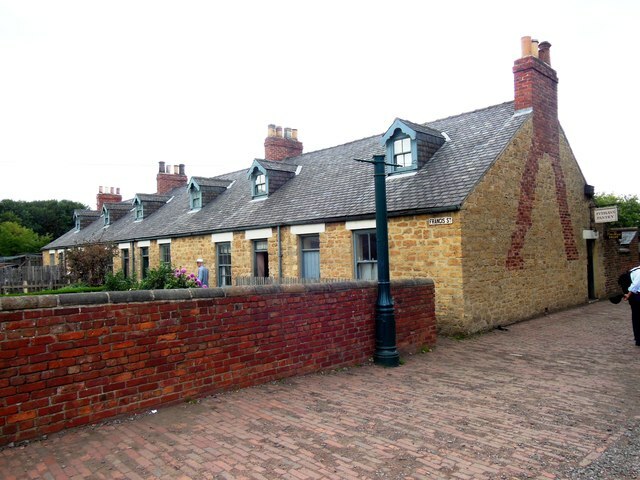The cottage garden is a distinct style that uses informal design, traditional materials, dense plantings, and a mixture of ornamental and edible plants. English in origin, it depends on grace and charm rather than grandeur and formal structure. Homely and functional gardens connected to cottages go back centuries, but their stylized reinvention occurred in 1870s England, as a reaction to the more structured, rigorously maintained estate gardens with their formal designs and mass plantings of greenhouse annuals.
Roses, clematis, a thatched roof: a cottage garden in Brittany.
Vernacular thatched cottages (built in 1812–1816) in Woburn Street, Ampthill, Bedfordshire, surrounded by garden.
Restored Gertrude Jekyll border at Manor House, Upton Grey, Hampshire
Helen Allingham watercolor showing elite peonies and modern delphiniums in an idealised cottage garden, 1909
A cottage, during England's feudal period, was the holding by a cottager of a small house with enough garden to feed a family and in return for the cottage, the cottager had to provide some form of service to the manorial lord. However, in time cottage just became the general term for a small house. In modern usage, a cottage is usually a modest, often cosy dwelling, typically in a rural or semi-rural location and not necessarily in England. The cottage orné, often quite large and grand residences built by the nobility, dates back to a movement of "rustic" stylised cottages of the late 18th and early 19th century during the Romantic movement.
South Savonia is one of the largest summer cottage regions in Finland, with more than 50,000 holiday homes. The picture was taken in Mäntyharju.
A typical cottage in Devon, with walls built of cob and a thatched roof.
19th century coal miners' cottages rebuilt at the Beamish Museum.
The Ugly House (Welsh: Tŷ Hyll) near Betws-Y-Coed, a famous example of a tŷ unnos.








